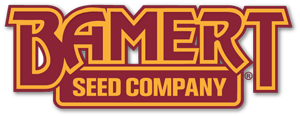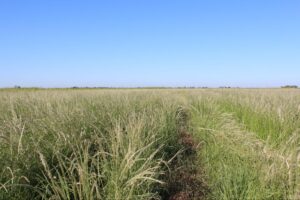Part 1, Selecting Seed & Seeding Rate
By Barry Coker, Reclamation Specialist, Bamert Seed
The title “Reclamation Specialist” seems relatively self-explanatory but it can be surprisingly complex. My colleagues and I are all very different people, but we all have one thing in common – we love to help people. Coincidentally, we are tasked with taking almost any combination of environmental conditions, pairing that with whatever tools our customers might happen to have at their disposal, and doing our very best to help them accomplish a common goal – establishing vegetation on an area, that for some reason or another, vegetation did not exist before. In an effort to help you and give you a reasonable expectation of success when trying to establish native plants, we are outlining some of the questions that we ask to help our customers be successful.
When someone calls our office or approaches us at a trade show looking for help, one of the first things that we ask is “What are you wanting to accomplish?”. One person might only have maximizing rate of gain in mind while the next is only interested in Honey Bees or Monarch Butterflies and most people fall somewhere in between. Your ultimate goal or your “vision” for what you want a piece of property to look like or the job that you want these plants to do will be a major determining factor behind which species should be used. Additionally, soil type, climate, and other geographic conditions come into play. Things like annual or perennial, warm or cool season, upland or lowland, length of growing season, and avg. annual rainfall should all be considered. After you have narrowed down the list of species that you would like to use and decided which ones are appropriate to use, there is another very important thing to consider…budget.
The native seed business is not that different than almost any other business when it comes to what drives the price – supply and demand. If a desirable plant is relatively easy to grow and tends to persist in an area over time, it’s probably because it is hardy and efficient at making seed. Such a plant would tend to have quite a bit of seed available commercially, creating a more competitive market and driving the price down. Plants that are not as common, likely are not as good at making viable seed and are more expensive – if they are commercially available at all. The availability of seed directly affects the price and therefore affects your ability to stay at or below budget. If you want to plant something that is rare, we are glad to try to help you but you should know that it will likely increase the cost per acre significantly. Seeding rate is a topic that I think is important to include in planning/budgeting. Whether it be an agricultural job or a reclamation job in the energy sector, many of our customers approach us with specs written by various agencies. Many of these specs include seeding rates that were developed with the primary goal of establishing a plant population that will reduce wind erosion. I have witnessed with my own eyes the amazing difference that stands of grass, planted using these published rates, make when the wind is blowing 50 mph. This is where we refer back to our original question, “What are you wanting to accomplish?” If you are satisfied with 3 plants per square yard and slower establishment, then these rates should work fine. If you are depending on the successful establishment of vegetation to get paid on a construction job or are depending on grass to feed your livestock, the land will most likely support a higher plant population than most published rates call for and under normal circumstances, increasing the rate should help is establish sooner. Of course, increasing the seeding rate will increase the cost per acre and should be weighed against the value you place on what it is that you are trying to accomplish. In other words, we can certainly reduce the seed cost for a project by decreasing the seeding rate but it is unlikely that you will be happy with the results.
After you have decided exactly what it is that you want to plant and how much of it that you want to plant, it is then time to figure out how you want to go about planting it…



